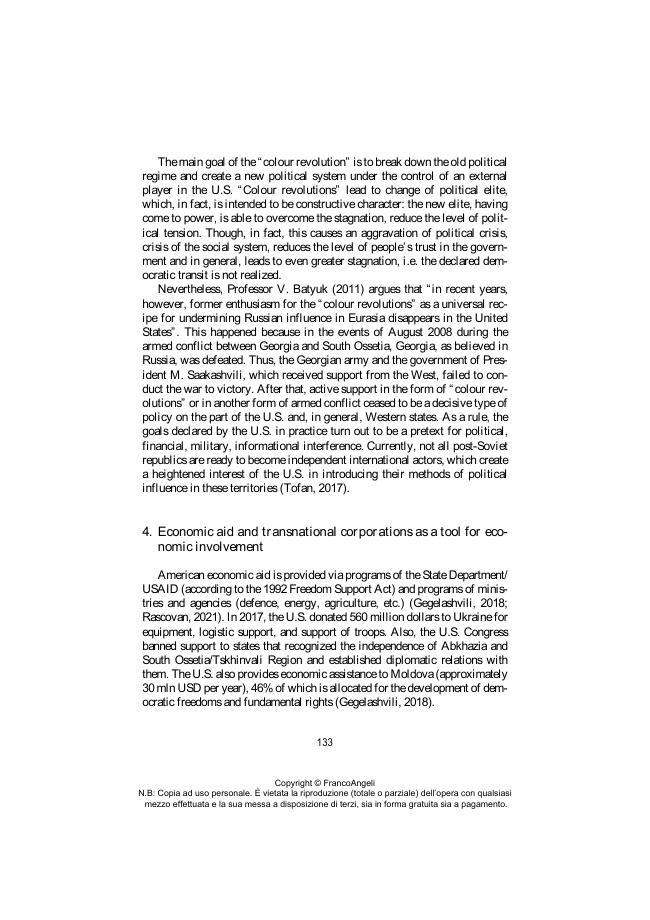Methods of implementation of the U.S. policy to ensure the sustainable development of the post-Soviet states
P. 127-139
The main aim of the article was to determine the key ways in which the United States of America conducts its foreign policy in the post-Soviet countries. The methods of observation, comparative analysis, and the principle of chronological sequence were used to study the U.S. foreign policy and its implementation. The article was based on empirical research methods, studying facts and analysing causes and consequences of the countries policy. Firstly, the authors highlight the ways of economic cooperation, exactly, the activities of transnational corpora-tions in the former socialist republics.
In addition, the authors characterized the influence of transnational corporations. Secondly, it was pointed out that the U.S. actively implemented such method as support "colour revolutions" in the process of pursuit of their political interests in the post-Soviet territory. Thirdly, the United States seeks to establish ties with the countries of the former Soviet Union, primari-ly Central Asia, to ensure security in the region and in Afghanistan. The C5+1 initi-ative, Northern Distribution Network, were developed for greater involvement in security issues. Fourthly, following the principles of "soft power", American politi-cians actively use the tools of public diplomacy, communication, support of civil society. [Publisher's text]
Fait partie de
Rivista di studi sulla sostenibilità : XI, 2, 2021-
Articles du même numéro (disponibles individuellement)
-
Informations
Code DOI : 10.3280/RISS2021-002010
ISSN: 2239-1959
KEYWORDS
- The U.S., foreign policy, color revolutions, soft power



